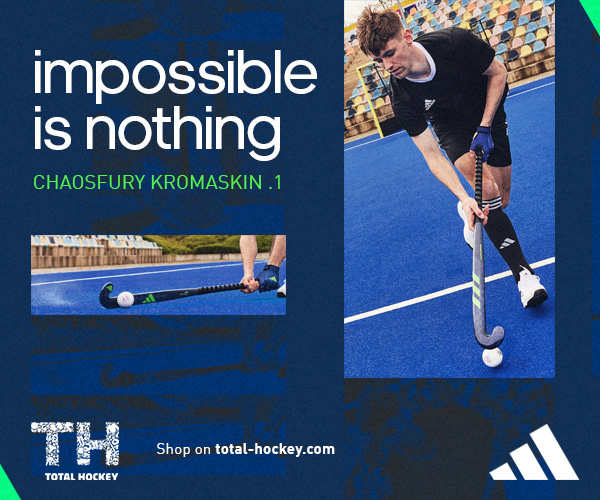Joanna wrote to The Hockey Paper following an injury to her 17-year-old son on the hockey pitch and says head protection should be worn at all times
The subject of safety on the hockey field is completely ignored. A mouth guard doesn’t protect much against a flying hard ball or hockey stick.
Last month, my 17-year-old son had to be operated on for a jaw fracture from a flying ball during a match. He was playing as he does at weekends and received a ball full on against his jaw. This was on the field, not during a penalty corner.
Continue reading...

Unlock our ad-free, premium content and get use of our subscriber-only app. Use coupon 3FOR1 to get 3 months for only £1!
Already a subscriber to our website? Login
Do you have a feature or story idea? Or simply send your news. Get in touch!





The image of the radiograph (Dental Panoramic Tomograph) suggests a primary centreline fracture, with a secondary left hand side fracture of the mandible, associated with the unerupted wisdom tooth. This doesn’t fit with the story which talks about a centreline and right hand side fracture. Has the image been flipped? Or, is it just a stock image?
What head protection is being suggested? During my playing, umpiring and watching career I have seen few significant head injuries caused by sticks or balls and would actually be more concerned about the loss of perception and disorientation caused by wearing a helmet, with minimal potential gain. Making players wear helmets would force more out of the game, as the additional expense would be prohibitive.
I agree with what’s being said here by Alistair. It is very unlucky and unfortunate that this has happened and I wish for him a speedy recovery. There is risk with everything in life but I do not feel making players wear helmets as suggested is necessary, is it not down to control and intention of the player and technique? If this were to be looked in to at what point of play DID this happen what pass, hit, aerial or other was made in this event at what distance? There are more questions that need to be asked to get a better understanding.
First of all, it’s counter-intuitive to argue with the statement that hockey is a dangerous game.
In fact, Rule 9 (Conduct of Play: Players) underlines this repeatedly, using the word nine times. It even helps to define what is ‘dangerous’, even if some interpretation (or common sense, erring towards caution)) is still required. This is further endorsed by the full version of the FIH Rule Book, Page 2, where it states that “Emphasis is placed on safety. Everyone involved in the game must act with consideration for the safety of others”
So we cannot dismiss Joanna’s central point – as always, it is is the solution that prompts disagreement. I lean towards the view that this is an unfortunate accident and one that is fated to occur from time to time. The hope, always, is that such an accident is not serious, as with Joanna’s son. As a player of many decades, I have had my fair share of hospital visits, although none so critical as reported in your article. As such, I don’t think that helmets (or worse, body armour) is the solution. However, a suitably-designed, lightweight facemask could be an option for consideration.
What can be done (as the Rule Book states above) is for everyone on the field of play, players and umpires, to be more conscious of the risks of the game (particularly where there is a mix of ability and ages on the pitch) and to act consistently in a disciplined and responsible manner.
Of course, umpires have to be the arbiters on the day of what is dangerous play but it will always be after the event. Yes, they can penalise such play early in the game but who’s to say the first incident will not be the serious one? Therefore, I believe that it is incumbent on all players to “act with consideration for the safety of others” and help minimise injuries to their fellow hockey-lovers.
However, I am not naive enough to think that this will happen overnight – there is a deep-set cultural view that the risks of the game are part of the joy of playing. No-one can dispute the pleasure of watching or playing in a fast-paced, skilful game but part of those skill sets can and must include consideration of the safety of others. As the preamble to Rule 9 states, “Players are expected to act responsibly at all time”
I know a young player who nearly lost her eye playing hockey.
Of course, under Rule 4.2, you’re not allowed to wear eye protection unless you have a medical reason which is how come GB’s Sam Ward now wears a protective mask, because the poor guy suffered a catastrophic injury playing hockey, that nearly cost him his sight.
Let that just sink in a moment… You’re not allowed eye protection… unless you’ve suffered an injury and then it’s okay. It’s positively Kafkaesque. Call me old fashioned, but wouldn’t it make more sense to allow players to wear eye protection before they lose their sight?
The logic of Rule 4.2 is that protective eyewear poses a risk to other players. In August 2020, an article in this very paper titled ‘Getting safety ready for the new hockey season’ stated: “The current FIH research into head/face injuries has concluded that the drawbacks associated with wearing face masks during general play i.e. a greater risk to players due to the possibility of impaired vision, a danger to their opponents and the so-called “gladiator-effect” whereby players take up positions that are more likely to incur injury due to feeling they are protected, outweigh the risk of injury as a consequence of not wearing a face mask during general play.”
I asked England Hockey for sight of the ‘current research’ referred to in the article numerous times, including the Chief Medical Officer, but no-one has provided me with a copy. Because of this, I cannot speak to the provenance of the ‘current research’, how up to date it is, or frankly, whether any such research does actually even exist. I say this because it has taken on the status of an urban myth within the hockey fraternity, with many people referencing, none of whom have actually seen it for themselves. In any event, how can there have been a determination that protective eyewear poses a risk, if wearing protective eyewear is not permitted? Don’t you require a statistically significant data set on which to base conclusions?
In fact there is a huge data set available. In 2011 the National Federation of State High School Associations in the USA mandated the use of eye protection at Junior level. The logic is simple; if protective eyewear does pose a danger to other players, there will have been a huge spike in injuries since 2011.
A 2015 study conducted by researchers at Hasbro Children’s Hospital, Boston Children’s Hospital, Fairfax (VA) County Public Schools and the University of Colorado School of Medicine found that nationally mandated protective eyewear resulted in no increase in rates of concussion and a greater than threefold reduced risk of eye and orbital injuries in high school (HS) Girl’s Field Hockey players.
This research is endorsed by, and forms the basis of an independent report by, the American Academy of Paediatrics. In addition, the National Federation of State High School Associations publishes an annual High School Sports-Related Injury Surveillance Study. In 2019, the NFHS confirmed to me, they had not found any consequences of additional injuries since implementing the goggle mandate in 2011.
Despite my good faith best endeavours, I have been unable to find any comparable evidence to support the argument that protective eye wear poses a risk to other players, including repeated requests to England Hockey. Based on the data, the fact that protective eye wear dramatically reduces the occurrence of eye injuries seems incontrovertible.
I have tried to engage England Hockey on this topic on numerous occasions. In Sept 2020 EH’s Chief Medical Officer wrote “…I have now heard back from the FIH. They are taking my query (about eye protection) to the health and safety board and will reply to me in due course. I will let you know when I have heard from them.”
I am still waiting.
I recently got hit in the jaw by a very powerful reverse hit/tomahawk in the side of my face but fortunately it healed quickly and I didn’t need any surgery or anything
I recently got hit in the jaw by a very powerful reverse hit/tomahawk, by one of my teammates while looking to deflect the ball, in the side of my face but fortunately it healed quickly and I didn’t need any surgery or anything
Following on from my previous comments, we also have to take note of what’s happening in other sports, notably the ‘class action’ apparently being put together by hundreds of former rugby players suffering from dementia, etc , allegedly caused by poor management of concussion and other head injuries. This echoes the situation in the US where the NFL has paid out huge sums for exactly that reason. Unfortunately, the Rugby authorities do not have the same deep pockets, albeit any payout will probably be covered by insurance…..first time round. Imagine the same with EH, FIH, or even your club?? It could be the death of the sport as insurers reduce or withdraw their cover, or, worse, as clubs and authorities are financially ruined. We all need to think carefully about the bigger picture but, most importantly, the effect on the lives of participants, and their families in the worst of cases, if we put off getting our own house in order.